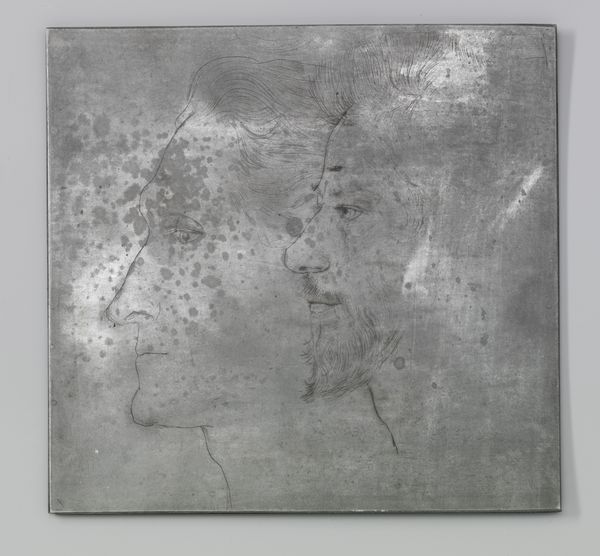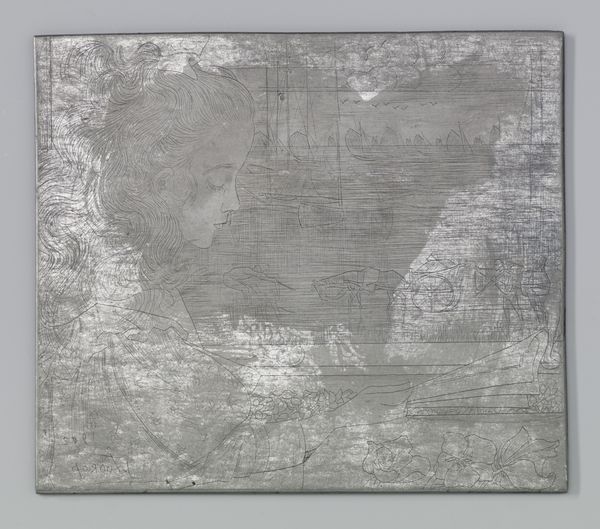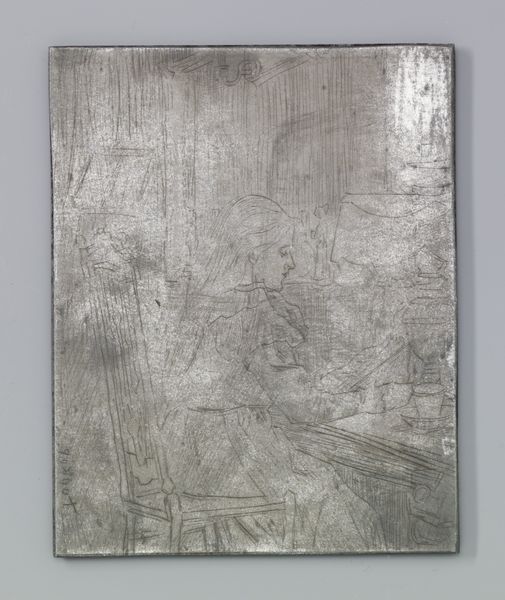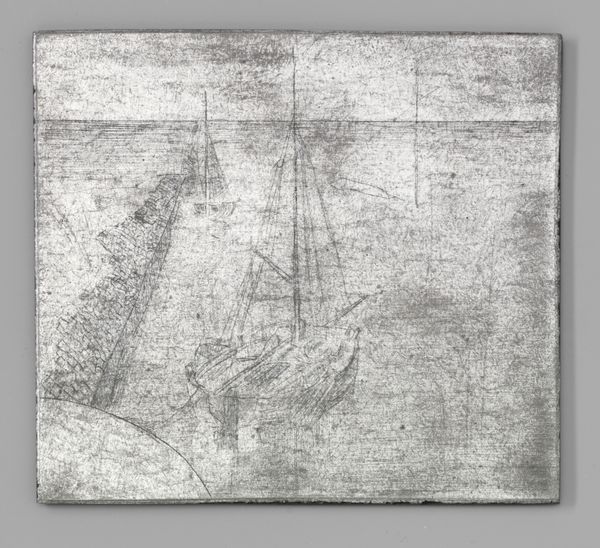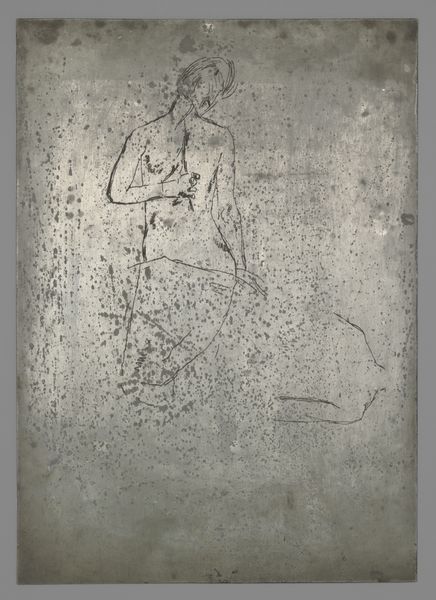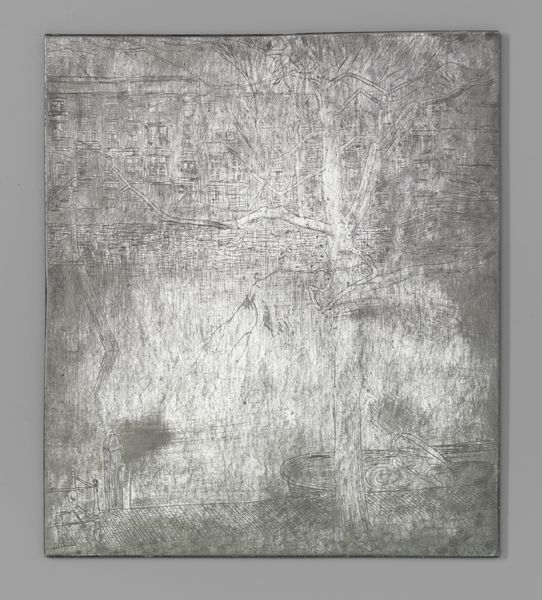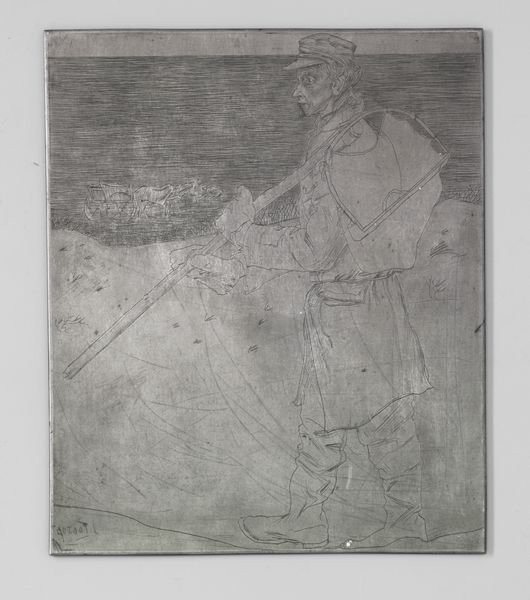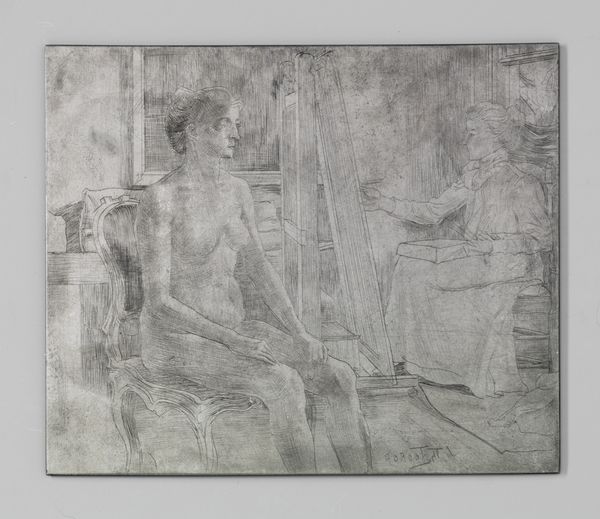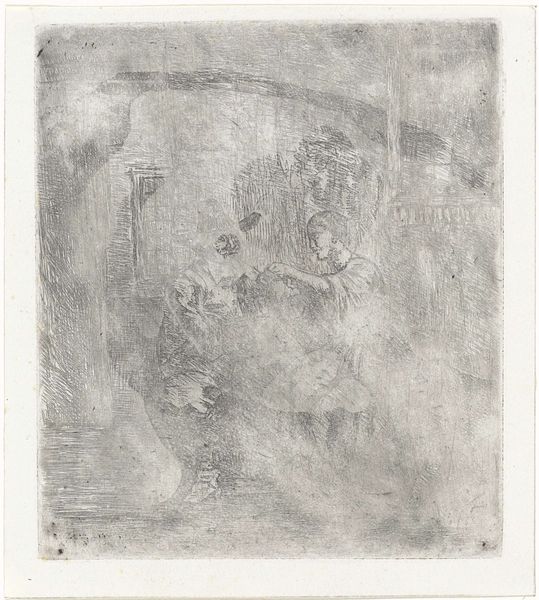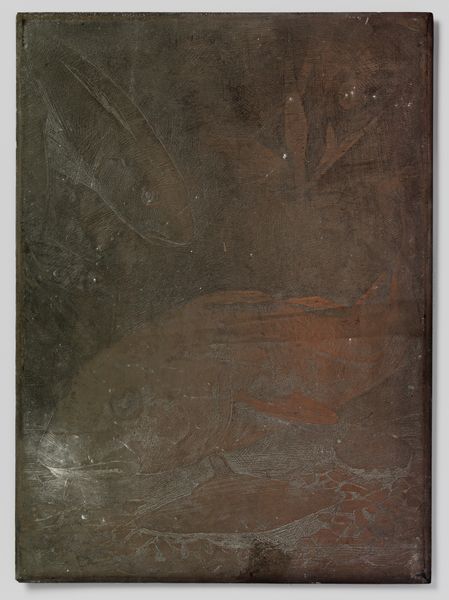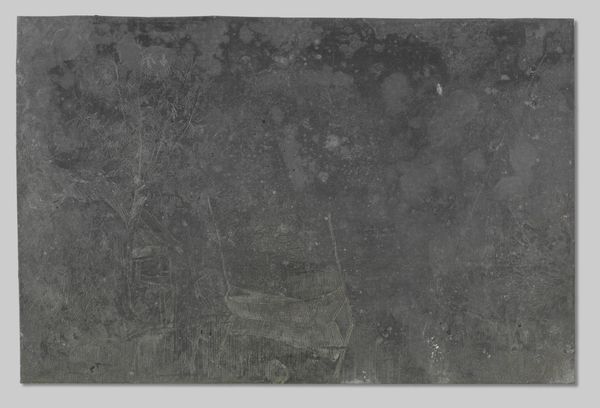
Dimensions: height 150 mm, width 138 mm
Copyright: Rijks Museum: Open Domain
Curator: Welcome. We're standing before "Young Woman Leaning on a Pillow" by Jan Toorop, created sometime before 1928. It's currently housed here at the Rijksmuseum, a delicate drawing rendered in graphite. Editor: It’s ethereal, isn’t it? The gray monochrome lends the whole piece an almost ghostly quality. You can see how light the lines are, very dreamlike. She seems lost in thought. Curator: Toorop was a key figure in the Dutch Symbolist movement and also in the development of Art Nouveau. Given that this drawing employs fine, flowing lines it’s no wonder we find this piece under the style of Art Nouveau. Toorop gained attention for the use of symbolism, drawing inspiration from literature and mysticism and responding to social themes that echoed modern ideals. Editor: The dreamy nature certainly adds to that idea of symbolic value. You wonder what she's contemplating in this rather passive pose. Considering it was produced before 1928, what was expected of women in terms of behavior, thinking, and agency? It's worth looking into those restrictions, to then pose how such creative thinkers of that period were impacted. Curator: Absolutely. It invites us to consider her potential inner world, especially given Toorop's broader body of work which frequently tackled themes of societal change and spirituality. His connection to both Symbolism and Art Nouveau provided him with a broad visual vocabulary to express these ideas. Editor: And what of that pillow, too? It’s supporting her physically, but I’m compelled to consider the social and psychological implications of those around the subject at the time this art piece was realized. Who exactly had the power to allow the subject the comfort this artwork presents? It speaks to a very specific societal position, one we ought to bring up when considering art from a political position. Curator: The pillow does seem to ground her in this ethereal space. It speaks to the luxury of contemplation and leisure available to certain classes at that time, which absolutely fits into Toorop’s position to examine these themes, to further cement how this piece encourages a complex look into cultural attitudes in the pre-war era. Editor: I agree. Toorop's legacy remains relevant today, for it showcases the potent ways we as human beings negotiate our personal, cultural, and societal tensions. Curator: His work, this piece included, acts as an invaluable source of introspection into an era undergoing fundamental transformations.
Comments
No comments
Be the first to comment and join the conversation on the ultimate creative platform.
